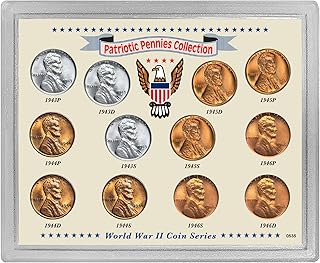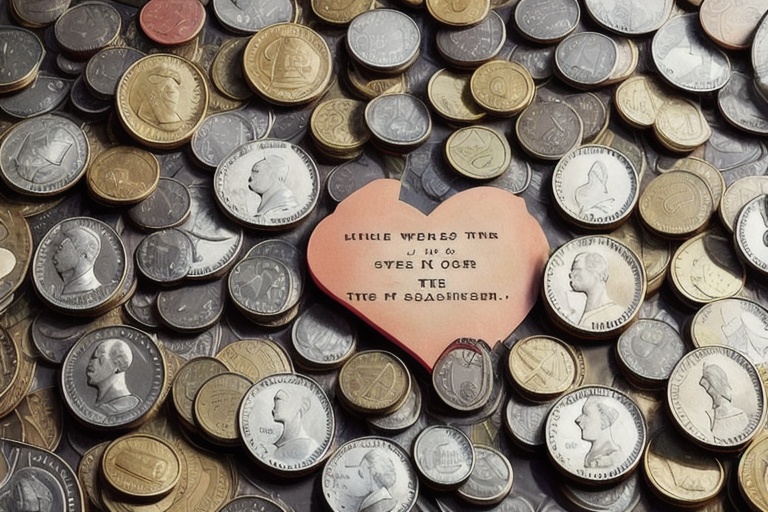Welcome to our coin collecting and coin valuation blog! Whether you're a beginner or a seasoned collector, this blog is dedicated to bringing you the latest trends and information in the world of coins. Coin collecting can be a fascinating and rewarding hobby, offering a unique blend of history, culture, and art. In this introductory article, we'll explore the basics of coin collecting, from understanding the anatomy of a coin to different approaches you can take in building your collection. We'll also provide helpful tips on coin valuation and advanced collecting techniques. So sit back, relax, and get ready to embark on an exciting journey into the world of coins! Happy collecting!
Welcome to our coin collecting and coin valuation blog! Whether you're a beginner or a seasoned collector, this blog is dedicated to bringing you the latest trends and information in the world of coins. Coin collecting can be a fascinating and rewarding hobby, offering a unique blend of history, culture, and art. In this introductory article, we'll explore the basics of coin collecting, from understanding the anatomy of a coin to different approaches you can take in building your collection. We'll also provide helpful tips on coin valuation and advanced collecting techniques. So sit back, relax, and get ready to embark on an exciting journey into the world of coins! Happy collecting!
Understanding Coin Anatomy
Before diving deeper into coin collecting, it is crucial to be familiar with the anatomy of a coin. The primary elements include the obverse (the front, or "heads" side), reverse (the back, or "tails" side), edge, and rim. These vocabulary terms are foundations in assessing a coin's features and condition.
The Obverse
The obverse usually displays the key design, date of minting, and sometimes a motto or the name of the country. It's essential to familiarize oneself with these features, as they assist in identifying and valuing the coin.
The Reverse
On the reverse, you'll often find secondary artwork, commemorations, and additional legal tender information. Both the obverse and reverse can yield clues to a coin's history and significance.
Edge and Rim
The edge of the coin can be reeded, lettered, or smooth. The rim is the raised part of the edge that helps protect the coin's design from wear. These characteristics can affect both aesthetic appeal and collectible worth.
Approaches to Collecting
Coin collectors often specialize in specific types of coins. Some focus on coins from a particular country or era, while others may collect coins based on their composition (gold, silver, etc.), designs, or themes. Your approach to collecting should align with your personal interests, goals, and budget.
Type Set Collecting
Type set collecting involves gathering one example of each design or era. This approach provides a broad overview of coinage history and design evolution.
Key Date Collecting
Key date coins are from years with low mintages or other significance and are often the most coveted and valuable within a series.
Error Coin Collecting
Some collectors find excitement in seeking out error coins—pieces that have minting flaws. Error coins can be both unique and valuable.
Coin Valuations
Factors Influencing Value
When valuing coins, collectors consider rarity, demand, condition, and precious metal content. A coin's condition is rated on a grading system, typically ranging from "Poor" to "Mint State." Professional grading services can provide an official grade and encapsulate coins to preserve their condition.
The Grey Sheet
Knowledgeable collectors often use the "Grey Sheet," or CDN Greysheet, a weekly publication listing wholesale prices of U.S. coins. This guide can be a valuable tool for assessing market value.
Resources and Grading Standards
The Official American Numismatic Association (ANA) Grading Standards provide guidelines for evaluating coin conditions. Familiarizing yourself with these standards will help you make more informed decisions when buying or selling coins.
Advanced Collecting Techniques
Building a Focus Area
Advanced collectors may narrow their focus to create a more specialized and impressive collection. This could involve concentrating on a particular series, designer, or motif.
Estate Sales and Auctions
Estate sales and coin auctions can be goldmines for unique finds. However, it's essential to research the auction house's reputation and transaction terms before participating.
The Art of Negotiation
Honing negotiation skills can lead to more strategic purchases. Building relationships with dealers and understanding market trends are essential aspects of this.
Coin Preservation
Proper care and storage are paramount to maintaining the condition and value of your collection. This includes using appropriate holders and climate-controlled environments to prevent damage.
Advantages of Joining a Coin Club
Coin clubs offer camaraderie, shared knowledge, and opportunities to buy, sell, or trade coins within a trusted community. Meetings and events can be fantastic venues to show off your collection and expand your expertise.
Continuous Learning
A persistent attitude toward learning and staying informed is beneficial to collectors. Keeping up with market trends, mint releases, and historical contexts enriches the collecting experience and aids in making sound investments.
Final Reflections
The hobby of coin collecting and the practice of coin valuation cater to a wide audience, engaging diverse interests and levels of expertise. It is an accessible passion that prompts the growth of a unique and potentially valuable collection over time. Remember to make informed purchases; a fair deal is often the result of thorough research and a clear understanding of return policies. Celebrate each acquisition and use all available tools and resources to enhance your knowledge and collection. Coin collecting, as highlighted in this comprehensive guide, isn't just a pastime—it's a journey rich with history, knowledge, and community. Here's to many fruitful years of coin collecting ahead. Happy collecting!
Information for this article was gathered from the following source.



